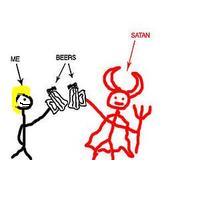The book takes place in October of 1976. This means the Pathet Lao takeover is about a year in. Although considered the equivalent of the Viet Minh or Khmer Rouge, they never seemed to be as bad or, at least, they never made the news if they were. They certainly were bad news for the Hmong, who had collaborated with us. The numbers aren't clear but thousands fled the country following Communist takeover by crossing the Mekong into Thailand-the town on the Thai side by the way is Sri Chaing Mai which is evidently the spring roll capital. There are refugees scattered all over-in the States, in Australia, in Thailand (where they've been having troubles recently.) There have been efforts to both improve US-Laos relations and repatriate the Hmong but the results are mixed. According to Wikipedia, the Hmong were called Montagnards by the French because they lived in highland areas but they shouldn't be confused the the Vietnamese Degar, who were also called Montagnards.
Pathet Lao just means "Lao Country."
The Laotian Civil War lasted from 1953-1975. This means it pretty much had been going on ever since the French officially withdrew after the Battle of Dien Bien Phu. The battle was actually very close to the Laos border:
After 1953, the history gets too complicated to summarize well but there's more here. There were various coups and corruption caused by an influx of US aid. We of course were freaked out by the creeping Communist umbrella. According to the article. Laos is the most bombed nation in the history of war.
The article says the LPRP (Lao People's Revolutionary Party) is still in control but they have been enacting economic reforms since 1986. They are a poor country with lots of debt. The Lonely Planet once again assures me this is an great, cheap and low crime place to travel.
Comrade Kahm tells Siri that he knows the cause of his wife's sudden death: her addiction to lahp, a raw meat dish. Apparently, it can also be served cooked. Which is good news for Laotians. Lahp seems to just mean "minced." You can even have tofu lahp. Here's the recipe.
She actually died from cyanide poisoning, the almond smell being the standard dead giveaway. I'd read various mystery novels for years where someone sniffed the cadaver's breath for an almond smell but it was only recently that I learned why that smell was connected to cyanide.
The almonds we eat are Prunus dulcis, the ones that produce cyanide in significant quantities are Prunus amara. Turning the original poisonous version into the key ingredient for Almond Joy is the result of a simple human-induced genetic mutation. Plants produce cyanide as a defense mechanism. Some other common foods that contain cyanide (reduced to safe amounts such as selective breeding) are lima beans, soy, spinach and cassava. There are people in Africa whose diets, principally due to war and famine, consist mainly of cassava who suffer from a low-grade form of cyanide poisoning called konzo.
In passing, Siri mentions the Anusawari Arch. I wanted to go into a little more detail because it's quite striking and because the back story is funny.
First here it is:
It looks old but it was built between 1957-1968 and is a monument to those who died in the battle for independence from France. It's also known as Patuxai or "Victory Gate." Evidently, it was built with American money and cement that was intended for an airstrip. Oops. Well, at least it's pretty. It is sometimes known as "the vertical runway" for that reason.
It's mentioned a few times about people being sent to Vieng Xai (or Viengsai) for re-education. This was the stronghold of the Pathet Lao during the insurgency and where the took shelter in the cave system during the US bombing. It's supposed to be a very lovely place. Here and here is some more information about traveling there.



No comments:
Post a Comment